Within the 45 kilometers of paved Inca trail from Piscacucho to the Inca citadel of Machu Picchu, around 200 species of birds can be observed. The Inca trail has 12 different microclimates and the altitude variation varies between 2700 and 4200 meters.
All these geographical factors make it possible to observe a great variety of birds on the Inca trail. In this article we will list and describe the most representative and colorful birds of this Inca trail to Machu Picchu.
Many bird watchers see a masked trogon for the first time in the section between Phuyupatamarca and Wiñaywayna or a torrent duck on the Urubamba river. The best time to watch birds on the Inca Trail is in the morning when these colorful little animals wake up very hungry.
Summary
Most representative birds on the Inca trail
In addition to the 200 species of birds that you can observe on the Inca Trail, there are about 4 species that you will observe yes or yes, whether you hike the Inca Trail tour of 4 or 2 days.
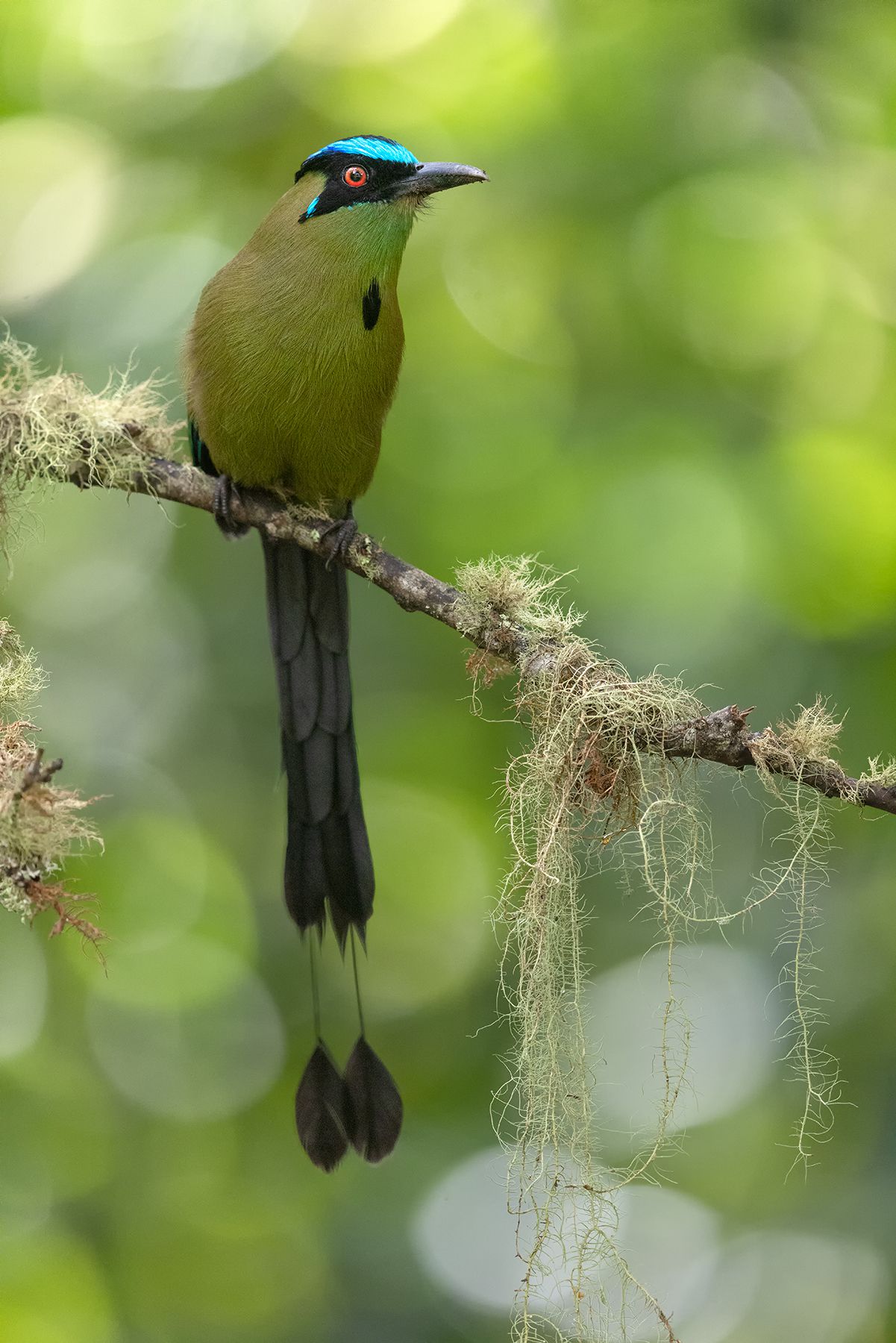
Andean Motmot
1. Andean Motmot (Momotus aequatorialis)
The serrano motley, also called blue-crowned motley, mountain burg, ravine, solitude, or mountain ravine (in Colombia) or mountain watchmaker (in Peru), is a species of heart-shaped bird belonging to the Momotus genus of the Momotidae family. It is native to the Andean region of northwestern and western South America.
Distribution and habitat
This is one of the birds on the Inca trail that is distributed along the Andes from northwestern Colombia, through Ecuador, Peru, to the extreme north of Bolivia.
Its natural habitat is subtropical and less temperate montane forests, usually at altitudes between 1,500 and 2,400 meters.
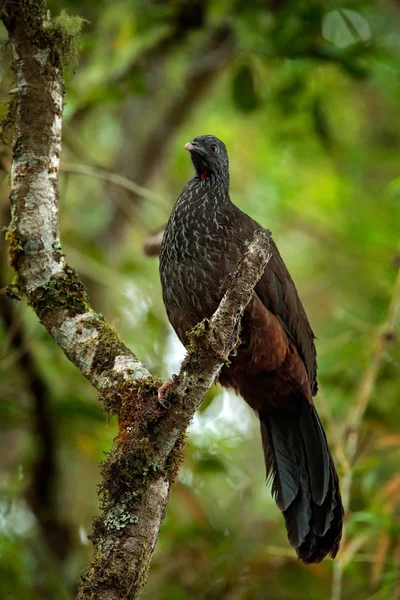
Andean Guan
2. Andean Guan (Penelope montagnii)
The Andean guan or Andean mountain guan, is a species of galliform bird that belongs to the Cracidae family, it is found in jungles of the Andes between 1500 and 3900 meters of altitude. Among the countries of Venezuela, Colombia, Ecuador, Peru, Bolivia, to the extreme northwest of Argentina, where it was recorded between the town of Casas Viejas and the Trigohuaico river, in the north of Salta.
Habitat
The Andean Guan live in the Cloudy Forests, plain forests and humid forests. These birds on the Inca Trail spend most of their time among the trees in small groups of three to seven individuals, feeding on berries and wild fruits, although they also constantly seek out and follow the armies of army ants on which they feed. They build their nests among the branches and the female lays one or two eggs. The chicks hatch around March.
It has been slightly affected by habitat destruction, both deforestation and hunting are its greatest threats. However, due to its wide distribution, it is not globally threatened. Given its altitudinal range, it could be affected by habitat fragmentation in the long term.
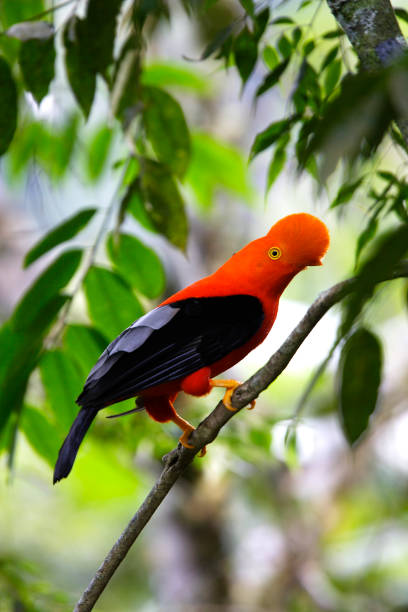
Peruvian Cock of the rock
3. The Cock of the Rock (Rupicola peruvianus)
The Peruvian cock-of-the-rock, (in Quechua: tunqui), is native to the Andean-Amazonian region of northwestern and western South America. There are no known subspecies. Its closest relative is the Guiana cock-of-the-rock (R. rupicola) and it is notable for the incredible beauty of its plumage. In Peru it can be found in the eastern foothills of the Andes.
Distribution and habitat
This species is one of the birds on the Inca trail, more difficult to be observed. It is considered locally not uncommon in its natural habitat, the high and humid cloud forests of the Amazon located on the eastern slope of the Andes mountain range between 500 and 2400 meters of altitude, where it prefers ravines and ravines (also known as yungas).
Due to its incomparable beauty and its tonality of colors, this is one of the birds on the Inca trail, which is currently suffering strong capture and trafficking pressure, taking into account that a specimen can fetch 7,000 usd in the external illegal market.
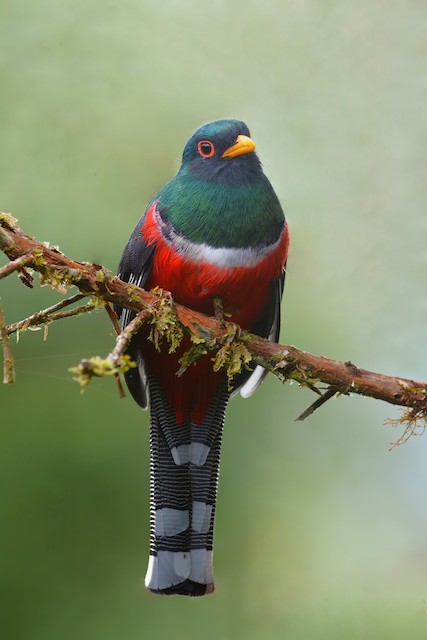
Masked trogon
4. Masked Trogon (Trogon personatus)
It is a species of bird in the Trogonidae family. It is popularly known by the name of La Soledad in some South American countries.
Distribution and habitat
It is found in South America mainly in the Andes and Tepuy. Its natural habitats are subtropical or tropical moist forests and old degraded forests. It is in one of the birds on the Inca trail that can be found between the archaeological center of Phuyupatamarca and Machu Picchu.
Its songs are characterized by a soft and melodious cadence, and it is considered one of the best gifted birds on the planet for vocal synthesis.
In conclusion, this is one of the most particular birds on the Inca Trail due to its exotic color and melodious song.
The most common birds on the Inca Trail
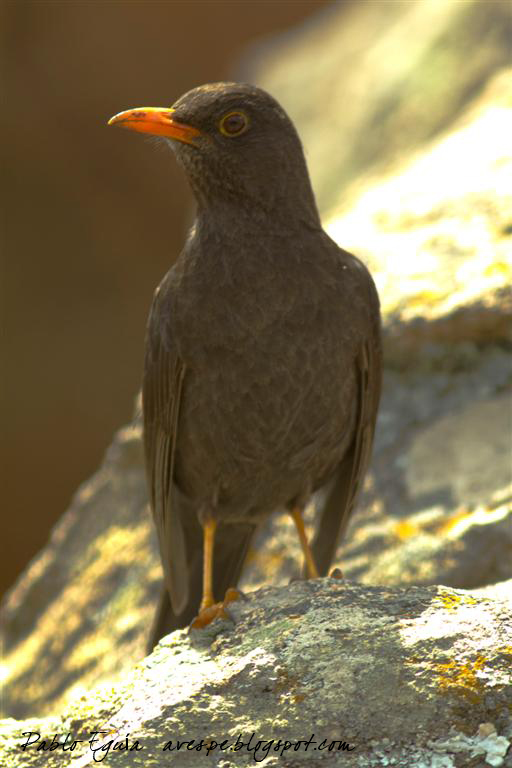
Chiguanco
5. Chiguanco (Turdus chiguanco)
The chiguanco thrush or black thrush (Turdus chiguanco) is a species of bird in the Turdidae family. It inhabits the mountains of Ecuador, Colombia’s border with Ecuador, they are also found in Bolivia and can be found in some mountainous areas of Argentina and Peru through the puna, in tropical and subtropical humid lands, as well as forests with high levels of degradation.
Many tourists on the Inca trail are annoyed by this bird from the thrushes family due to its insistent voice at unusual times. It is believed that it begins to sing from 4:00 in the morning, when the sun has not yet risen over the horizon.
This is one of the few birds on the Inca trail that you will see every day on your tour to Machu Picchu.
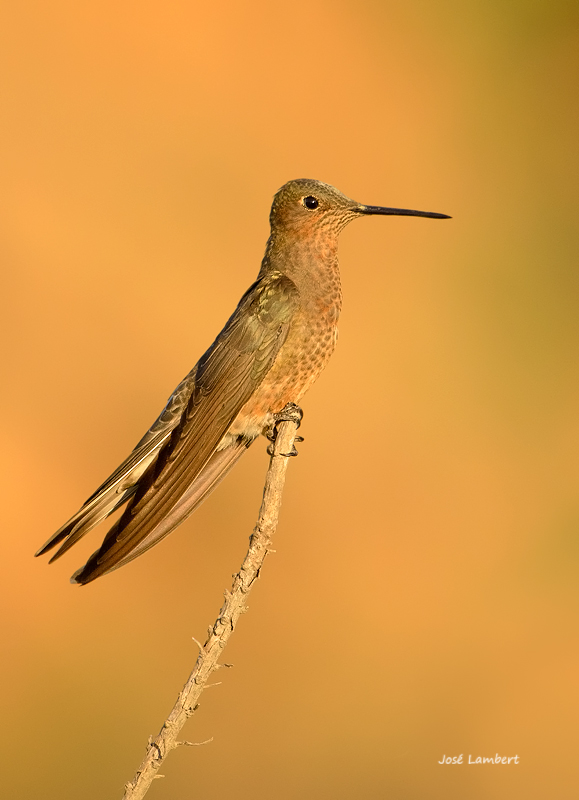
Patagona Gigas
6. Giant Hummingbird (Patagona gigas)
The giant hummingbird is a species of apodiform bird of the Trochilidae family, and the only representative of the Patagonas genus. In Chile this hummingbird lives between sea level and 1500 meters. However, this is one of the birds on the Inca Trail that lives up to 3,500 meters.
Description
This huge hummingbird, measuring between 21 and 24 cm in length, is the largest in the world. It is greenish above, reaching to the tail. It has a distinctive white patch on the rump. It has a long and wide tail and a slight sexual dimorphism, which is mainly noticeable in the lower areas; male is brown below, while female is grey, with black mottling on throat.
Diet
With its moderately long bill it feeds on flower nectar (using its tongue) and insects. In Chile it is one of the main pollinators of the flowers of the chagual (Puya chilensis). The regular and deliberate intake of calcium-rich minerals by this species has also been recorded, possibly because it is a scarce element in its nectarivorous diet.
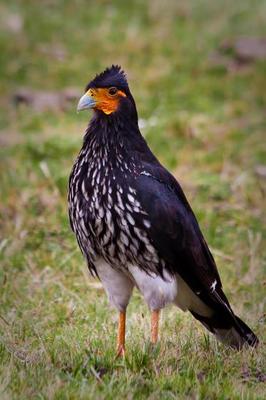
Andean Caracara
7. Andean Caracara (Phalcoboenus megalopterus)
It is a species of falconiform bird of the Falconidae family that lives throughout the Andean region of the puna. There are no known subspecies. Among other vernacular names this species is known as corequenque, Andean caracara and alkamari.
Ecology and behavior
He usually walks on the ground. It is suspicious and an excellent glider, capable of folding its wings in strong winds. Commonly flies low. It tends to look for food among rocks or weeds, sometimes scratching the ground. This is one of the birds on the Inca trail that you will observe with 100% probability in the Puyupatamarca camp.
Feeding
The diet consists of carrion and small animals such as mammals, birds or arthropods. It also catches insects and worms by scratching the ground. It is a very opportunistic bird that is commonly seen walking on the ground. It feeds on both carrion and virtually any small animal it can catch.
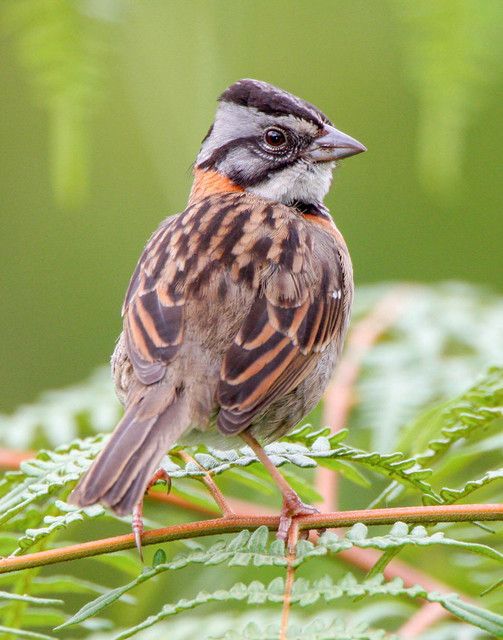
Andean Sparrow
8. Andean Sparrow (Zonotrichia capensis)
The chingolo or copetón is a species of Neotropical passerine bird in the Emberizidae family. It is the only one of this distribution among the so-called «American sparrows» of the genus Zonotrichia.
Distribution
This species is distributed throughout South America, including Tierra del Fuego and Isla de los Estados, Central America, Aruba, Curaçao and the island of Hispaniola (Dominican Republic and Haiti). It can be seen in virtually any open or semi-open habitat, including crops, gardens, parks, grasslands, and secondary shrubs or the Cerrado. This is probably one of the birds on the Inca trail that you will see the most.
Endemic birds of the Inca trail to Machu Picchu
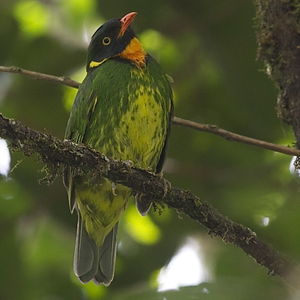
Masked Fruteater
9. Masked fruiteater Pipreola pulchra
The masked fruiteater, also called the masked hailbird, is a species of passerine bird belonging to the genus Pipreola of the family Cotingidae. It is endemic to the Peruvian Andes in South America. One of the birds on the Inca trail that you can observe with greater certainty between the Wiñaywayna camp and Machu Picchu.
Distribution and habitat
It is distributed throughout the Andes of eastern Peru (from Amazonas to the Cordillera Vilcabamba in Cuzco).
This species is considered rare in its natural habitat, the middle and lower level of humid montane forests between 1,500 and 2,000 meters of altitude.
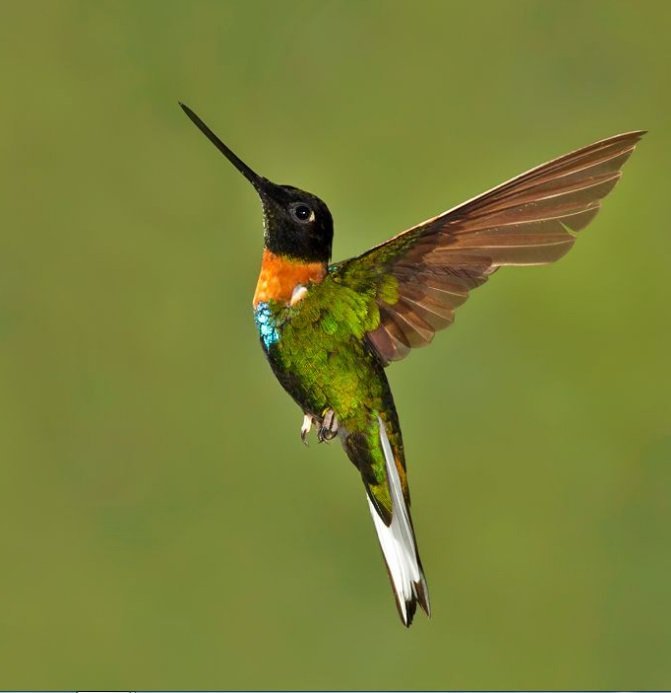
Inca Gould
10. Gould’s Inca Cilibri (Coeligena inca)
Gould’s Inca is a species of bird in the family Trochilidae, order Apodiformes.
It gets its name from the British ornithologist John Gould.
Distribution and habitat
It lives in the humid forests of the Andes mountain range, in the southeast of Peru and Bolivia. This is one of the birds on the Inca trail that you can observe between Km 82 and the Pacaymayu alto camp.
Description
It is very similar to the collared Inca (Coeligena torquata), which is why various authors considered it a subspecies of that one, but the morphological differences between the two (its pectoral patch is reddish and not white, like that of the collared Inca), have made which has now been classified as a separate species.
It measures about 14 cm in length and weighs about 7 gr.









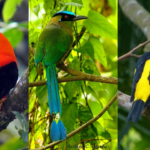
Leave A Reply